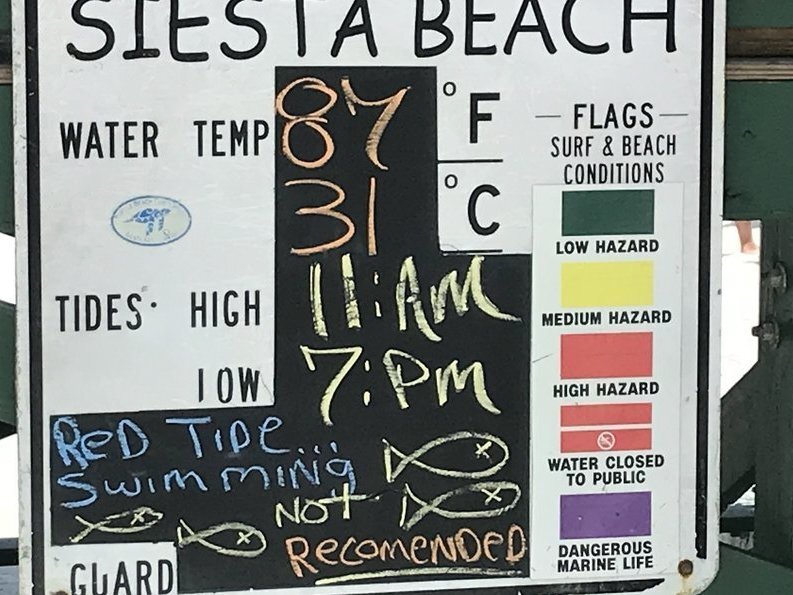 |
| Dead fish washed up on one of Florida's many Gulf Coast shores affected by the red tide outbreak. |
Florida's Gulf Coast beaches had been in the news for well over a year, due to a recent outbreak of red tide caused by an increase in concentration of a microscopic algae known as Karenia brevis. The algae is known to release poisonous chemicals when in high concentrations, which affects both marine life and coastal communities. The outbreak, which began in October 2017, resulted in death of hundreds of fish washing up on beaches of Lee, Manatee, and Sarasota counties, among others. The red tide had also been responsible for deaths of about 150 dolphins, and hundreds of manatees and sea turtles. Florida's coastal communities were also affected by the outbreak. This was seen when the red tide came close to the shores and wave action broke up the Karenia brevis cells, releasing their toxins into the air. The combination of high algae concentrations and onshore wind-blowing led to severe respiratory irritation amongst locals, causing coughing and tears. But lately, in the past few weeks, marine scientists have observed that the red tide is finally vanishing. According to Vincent Lovko, a staff scientist from Mote Marine Laboratory and Aquarium, there has been a reduction in the number of cell count samples and satellite photos did not show substantial patches of red tide bloom offshore in the Gulf Coast. Although there is some red tide being found in southwest Florida's Ten Thousand Islands area, the algae concentrations are decreasing. The disappearance of the latest red tide bloom is a relief to the Gulf Coast communities, which are now preparing for the spring tourism season.
 |
| A sign at Siesta Beach warning beachgoers not to swim in waters affected by the red tide. |
I'm also relieved that the red tide outbreak is coming to an end. But what really struck me about this news is that the red tide is nothing new in Florida. The origin of the red tide in Florida dates back to the time of Spanish conquistadors, who witnessed this algal bloom while exploring the Sunshine State. In addition to this latest red tide bloom, other such outbreaks included one in 2005 and 2006 which prevailed for seventeen long months. Another bloom occurred in 2012 and 2013 which killed hundreds of manatees and other marine life. Although the red tide is part of Florida's natural history, I firmly believe that a great deal of research is required to understand the red tide in depth. This is highly essential because coastal communities living in the vicinity of the sites where such outbreaks occur are at risk of respiratory irritation which could be fatal to people if they are exposed too much to the toxins from the algae cells. In addition, fish, dolphins, manatees, and other marine life are also at risk of getting killed by the toxins. This is why it is highly crucial to study the red tide in order to understand what causes it to occur and what can be done to prevent both coastal communities and wildlife from falling victim to it.
View article here
No comments:
Post a Comment